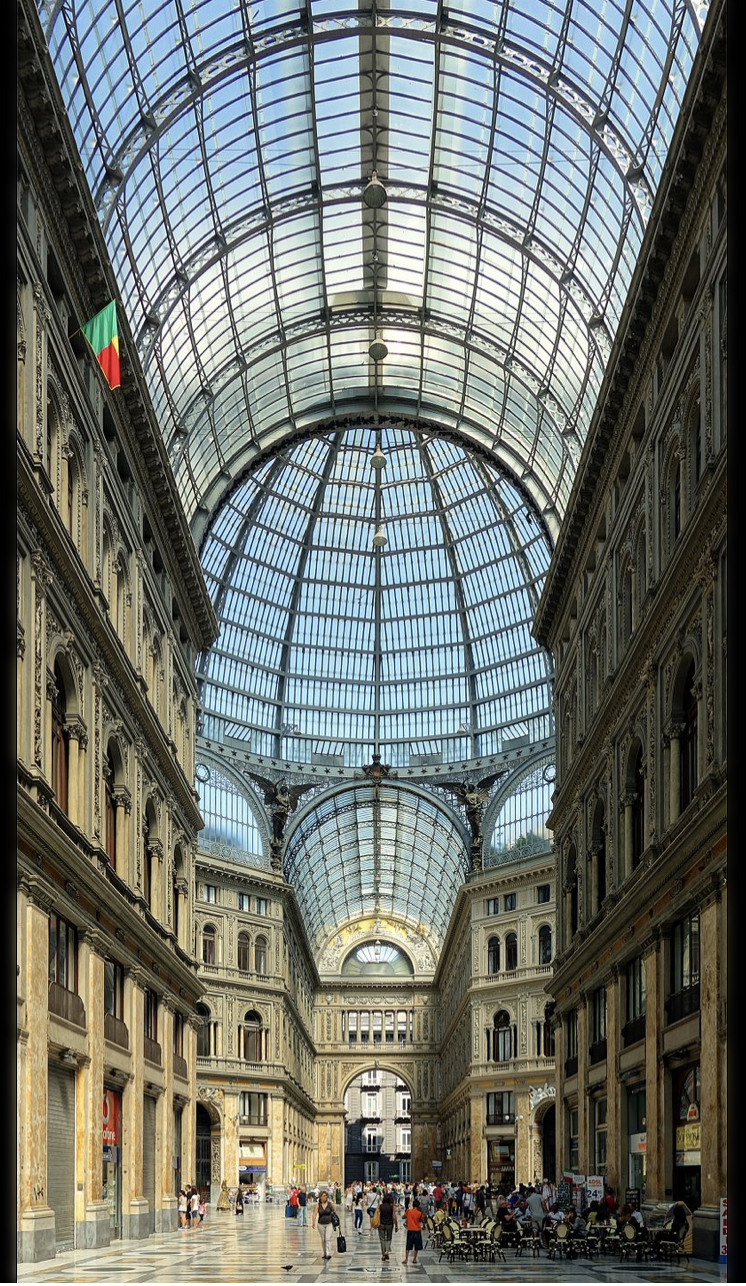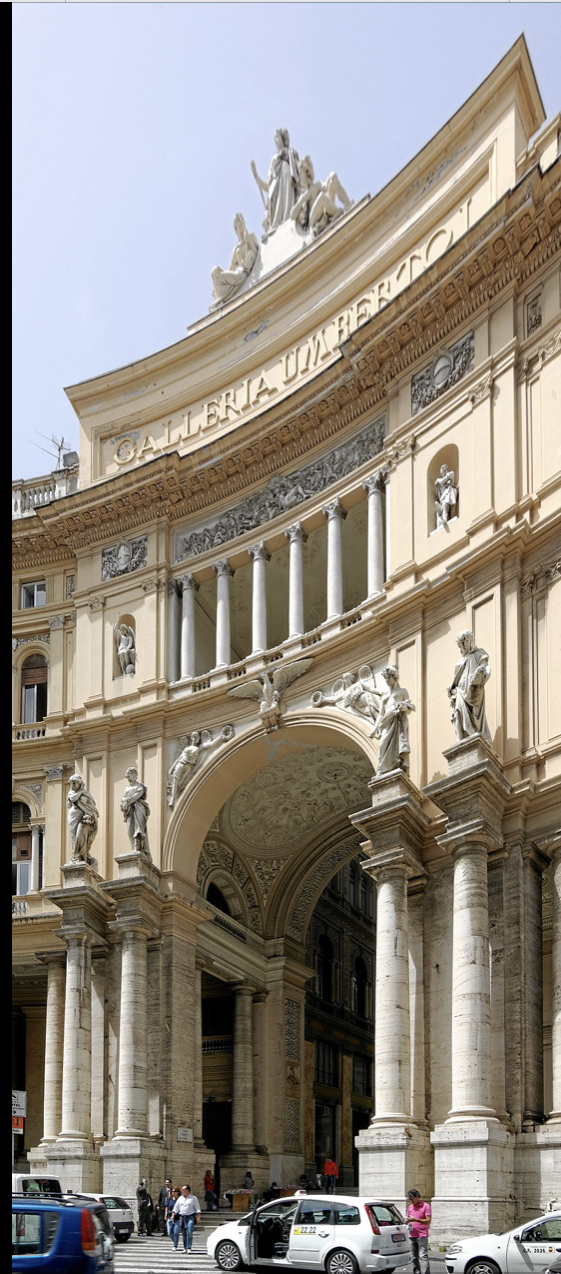Ammirando la maestosità della Galleria Umberto I di Napoli riesce difficile credere che sia stata edificata in soli 3 anni. Iniziata nel 1887 e terminata nel 1890, venne costruita negli stessi anni in cui, a Parigi, Gustave Eiffel realizzava la sua famosa Torre Eiffel. La Galleria Umberto I di Napoli non aveva nulla da invidiare al monumento con cui rivaleggiava per bellezza e complessità della struttura. I numeri di questa costruzione facevano girare la testa: lunghezza massima 147 metri, larghezza 15, altezza 34 e mezzo, il vertice della cupola a 57 metri. In poco tempo la Galleria divenne il centro mondano di Napoli, anche grazie alla vicinanza ai luoghi più importanti della città. La Galleria Umberto I ha 4 ingressi: Via Toledo, Via Santa Brigida, Via San Carlo e Vico Rotto San Carlo. L′ingresso principale si apre su Via San Carlo ed è composto da una facciata ad esedra che in basso è costituita da un porticato retto da colonne di travertino e da due archi ciechi, uno immette alla galleria e l′altro all′ ambulacro. Sulle colonne poste ai lati dell′arco di sinistra sono rappresentate in marmo le quattro parti del mondo. La prima da sinistra simbolizza l′Europa ed è una figura di donna che con la mano destra impugna una lancia appoggiandosi ad essa e custodendo ai piedi una lapide con su scritto: Corpus Juris Civilis. La seconda figura stringe una coppa e rappresenta l′Asia . La terza ha i tratti del viso e labbigliamento dell′Africa, ha con sé un casco di banane e ha la mano sinistra appoggiata sopra una sfinge. La quarta è una figura femminile che potremmo ritenere colombiana per la sua chiara allusione alle scoperte geografiche: la sua mano destra si posa su un fascio littorio e ai piedi ha un grosso volume di tavole geografiche con un globo terrestre su cui è scritto Colombo, in riferimento chiaramente all′America . Nelle nicchie sovrastanti ci sono: a sinistra la Fisica e a destra la Chimica. L′arco che è posizionato alla destra dell osservatore è simmetrico all′altro e sulle quattro colonne che lo affiancano ci sono quattro statue raffiguranti l′inverno , la Primavera, l′estate e l′autunno . Le stagioni alludono allo svolgersi del tempo e al passare inevitabile della vita. Nelle nicchie sovrastanti ci sono il Genio della Scienza e il Lavoro. Alla fine cè un gruppo marmoreo raffigurante il Commercio e l′industria semisdraiati ai lati della Ricchezza. L′autore di queste opere è il carrarese Carlo Nicoli, sculture e allievo di Giovanni Duprè.
Admiring the majesty of the Galleria Umberto I in Naples, it is difficult to believe that it was built in just 3 years. Begun in 1887 and finished in 1890, it was built in the same years in which, in Paris, Gustave Eiffel built his famous Eiffel Tower. The Galleria Umberto I in Naples had nothing to envy to the monument with which it rivaled for the beauty and complexity of the structure. The numbers of this construction made heads spin: maximum length 147 meters, width 15, height 34 and a half, the apex of the dome at 57 meters. In a short time the Gallery became the social center of Naples, also thanks to its proximity to the most important places in the city. Galleria Umberto I has 4 entrances: Via Toledo, Via Santa Brigida, Via San Carlo and Vico Rotto San Carlo. The main entrance opens onto Via San Carlo and is composed of an exedra facade which at the bottom consists of a portico supported by travertine columns and two blind arches, one leads to the gallery and the other to the ambulatory. The four parts of the world are represented in marble on the columns on the sides of the left arch. The first from the left symbolizes Europe and is a figure of a woman who with her right hand holds a spear leaning on it and holding a plaque at her feet with the inscription: Corpus Juris Civilis. The second figure holds a cup and represents Asia. The third has the facial features and clothing of Africa, she has with her a bunch of bananas and has her left hand resting on a sphinx. The fourth is a female figure that we could consider Colombian due to her clear allusion to geographical discoveries: her right hand rests on a fasces and at her feet she has a large volume of geographical tables with a terrestrial globe on which Columbus is written, in clearly referring to America. In the niches above there are: Physics on the left and Chemistry on the right. The arch that is positioned to the right of the observer is symmetrical to the other and on the four columns that flank it there are four statues depicting winter, spring, summer and autumn. The seasons allude to the passing of time and the inevitable passage of life. In the niches above there are the Genius of Science and the Work. At the end there is a marble group depicting trade and industry half-lying on either side of Wealth. The author of these works is the Carrarese Carlo Nicoli, sculptures and pupil of Giovanni Duprè.



















